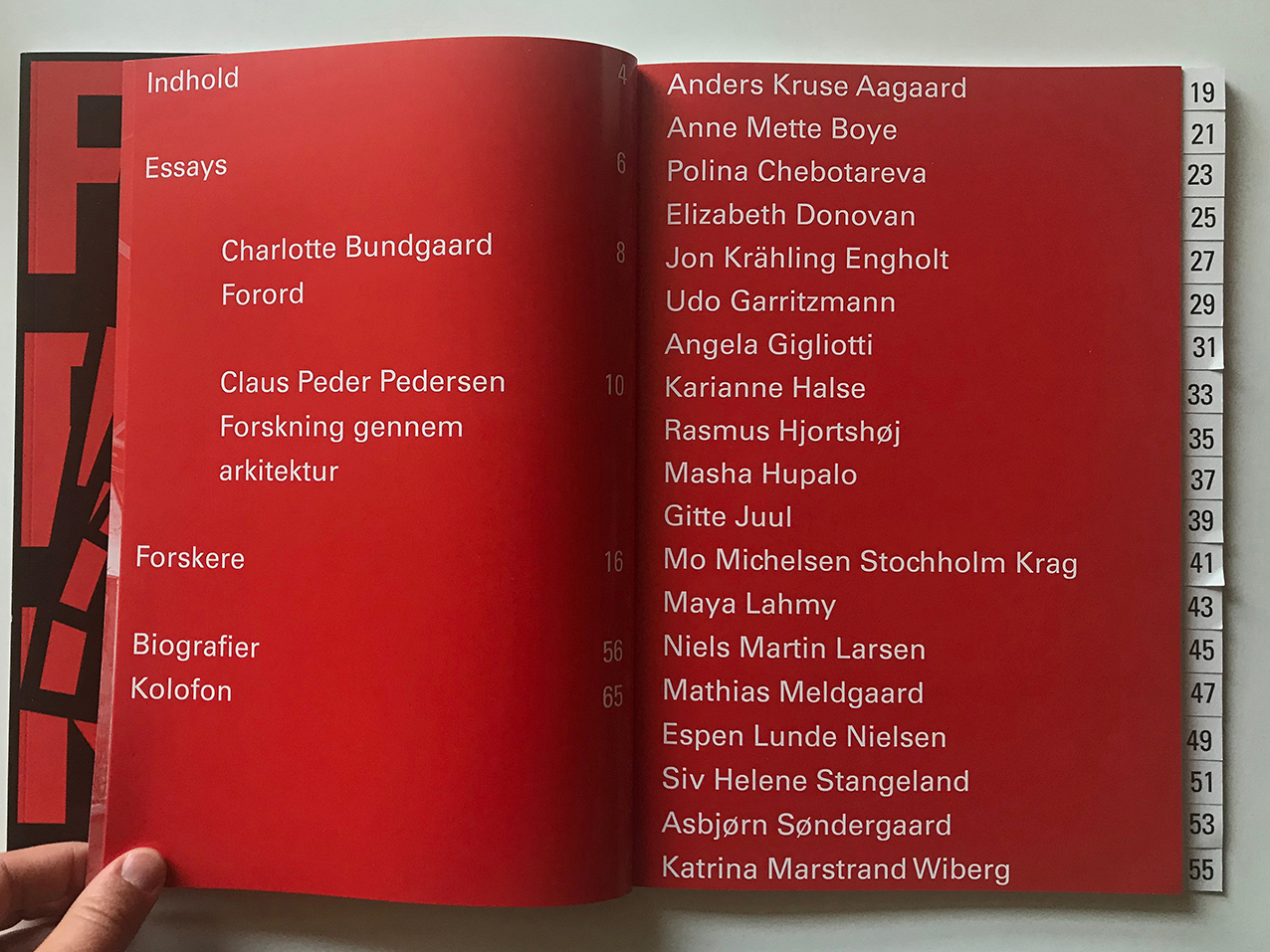Article
From the 13th April 2018 U67 launched 2 installations within the exhibition Forsk! curated by Karen Kjærgaard for the Aarhus School of Architecture.
Forsk! is an exhibition in which former and current PhD students from the Aarhus School of Architecture show projects that present the societal and architectural challenges of the time.
U67 presented the new project RED TAPES and INDEX ROOM, both part of the PhD research by Angela Gigliotti.
The exhibition takes place in Rå Hal on Godsbanen in Aarhus and opens on Friday 13th April at 16.00 until the 25th April, from 12.00 to 18.00
“Angela Gigliotti” in “FORSK! When Architects Research. Arkitektskolen Aarhus.” Claus Peder Pedersen, Charlotte Bundgaard eds. / ISBN 978-87-90979-79-9 (Aarhus: Aarhus School of Architecture Publisher): 31-32
WHY
There is a controversial – but even close, real and urgent topic in the profession of architecture discourse that faces the delicate, undeniable, relationship between the economic system and the modes of production of architecture. Architecture is a profession that needs money to be realized and, being liberal, it is finalized for the generation of economic turnover. If so why the rapport between money and architects is so arduous? For the majority of professions, money is the abstract medium to exchange a service. Architects, instead, have a sense of existential guilt in asking money, that results in negotiating conditions which are usually below what they deserve. The research acts in this framework and it considers the Danish case within the “Architecture and Labour” research field looking at the evolution of the modes of production of architecture within offices, considering the relationship and in/dependency between the Danish Welfare State and the architectural practices.
WHAT
The research reflects on the evolution of the Profession of Architecture in Denmark. Point of departure is the definition of which are the influencers able to shape the Profession in order to delineate the mechanisms (i.e. modes of production). To understand the present, the Contemporary Twenties (1993-2016), another period, as a precedent, will be investigated: the Trente Glorieuse (1945-75); using both archive works and fieldworks to collect data from the two timespans. From this, using the grounded theory method, a number of contemporary Practices will be investigated to delineate specific mechanisms used to face the challenges of today. The outcome of the research will be the definition of those mechanisms and the development of a take on the Danish case within a field that until now was not yet addressed it.
HOW
The narrative I am deploying to disseminate architectural research contents lays in the use of exhibition design. In this activity, my credentials, as a researcher who also had a background as practitioner with a specific focus on Exhibition Design (OFFICE U67 ApS) has been significant to wider the audience of my research. So, introducing my research in some context abroad sensible to the field of “Architecture and Labour”, using my knowledge on the Danish case as a contribution has been an important part of my dissemination plan.
An example of this has been in Spring 2017 with my participation as an invited contributor within the collective exhibition “Capitalism is Over” curated by Raumplan and Cascina Cuccagna for the Milan Design Week 2017, Italy.
The installation named “Index Room” transforms an archive review method into a physical display that contains a classification of each project published in Arkitekten (1945-75). About the content: each project published in the 31 years of the magazine was classified into Excel sheets for a total of 3809 rows and 10 columns. For each one an index card has been produced with 10 information: the year of publication; the name of the author; if any co-authors; the issues in which it was published (noting if weekly edition or monthly one); the project name; its location; eventual competition ranking; specific class of belonging; year of design when mentioned; the client. More than 3800 architectural projects were indexed and exhibited into a physical archive for a total of 15 kg of paper card hanged on a white lacquered ring steel.
If “Index Room” was an occasion to disseminate the first timespan of my research, the next one the “Red Room”, exhibited at FORSK! is an occasion to disseminate a Grounded Theory approach and therefore my second time span.
It considers how some junctures in the economy of Denmark (e.g., two financial crises in the early 90s and again in 2008) played a role in the definition of the modes of architectural production and its labour organization in the last twenty years (1990-2017). Specifically, about the content, it looks to some paradigmatic data, collected with a grounded theory method. The data are the ones related to 11 in-depth semi-structured interviews made to the CEO and directors of Danish architectural offices selected as representative cases of specific findings developed during the research.
In conclusion, I strongly believe that the interaction of theoretical arguments together with the design of an exhibition, and therefore the occupancy of a physical space along with a facilitate interaction with a broad audience, are powerful experimental fields when doing research in architecture.
